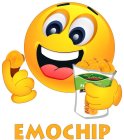Your cart is empty now.

Happy World Emoji Day #WorldEmojiDay Which Emojis are Trademarks?
- 17 July, 2018
- Nyall Engfield
Happy World Emoji Day! Which Emojis are Trademarks?
Have you wondered how many emojis are trademarked? Below is the full list of 151 live marks, applications and registrations. Some are in the more traditional emoticon form, using brackets ( ) and ; : etc. but many are in the more modern design form that was developed in Japan starting in 1999, and formalized in Unicode in 2010.
A few examples:




The Rise of Emoji Trademarks
As businesses seek to differentiate themselves in a crowded market, the use of distinctive, recognizable symbols becomes crucial. Emojis, with their universal appeal and ability to convey complex emotions and ideas succinctly, have become attractive assets for companies aiming to connect with their audience on a more personal level. The trademarking of emojis, or emoji-inspired designs, allows companies to legally protect these symbols when they are used to represent their products or services, preventing others from using similar marks in a way that could cause confusion among consumers.
Legal and Ethical Considerations
The process of trademarking an emoji involves several legal hurdles. Trademarks are traditionally designed to protect logos, names, and symbols that are unique to a brand, offering a way to distinguish goods and services in the market. However, emojis are generally considered to be part of the public domain, created and standardized by the Unicode Consortium, which complicates the notion of exclusivity essential to trademark law. For an emoji to be trademarked, it must undergo significant modification to reflect distinctive characteristics unique to the brand, moving beyond the generic version available on keyboards.
Furthermore, there are ethical considerations. Emojis are a global language, understood and used by billions of people. Attempting to trademark standard emojis could be seen as an effort to monopolize aspects of digital communication, raising questions about the balance between protecting business interests and preserving the open nature of digital culture.
Case Studies and Precedents
Several companies have successfully trademarked emoji-inspired logos or specific emoji designs for their products, setting precedents in intellectual property law. For example, a well-known beverage company might trademark an emoji design that incorporates its unique bottle shape, or a fast-food chain could trademark a specific emoji combination that reflects its brand identity. These cases typically involve designs that are distinct enough from the standard emojis to be recognized as specific to the brand, thereby qualifying for trademark protection.
If the mark is registered, it has a number in the Reg. Number column. Otherwise, it's an application. If there is nothing in Word Mark, then it's a design or logo.
Search
Archive
- August 2024



